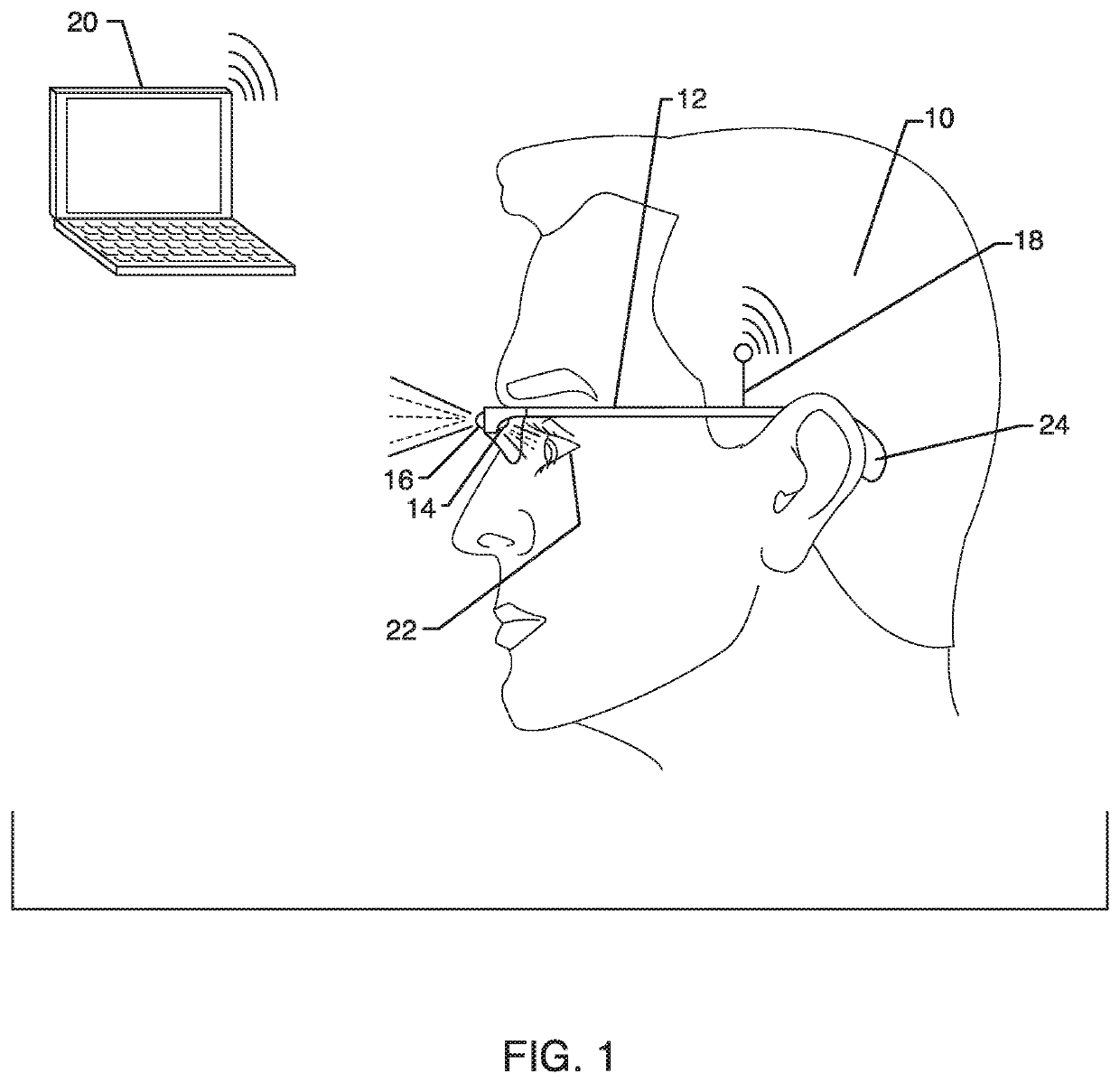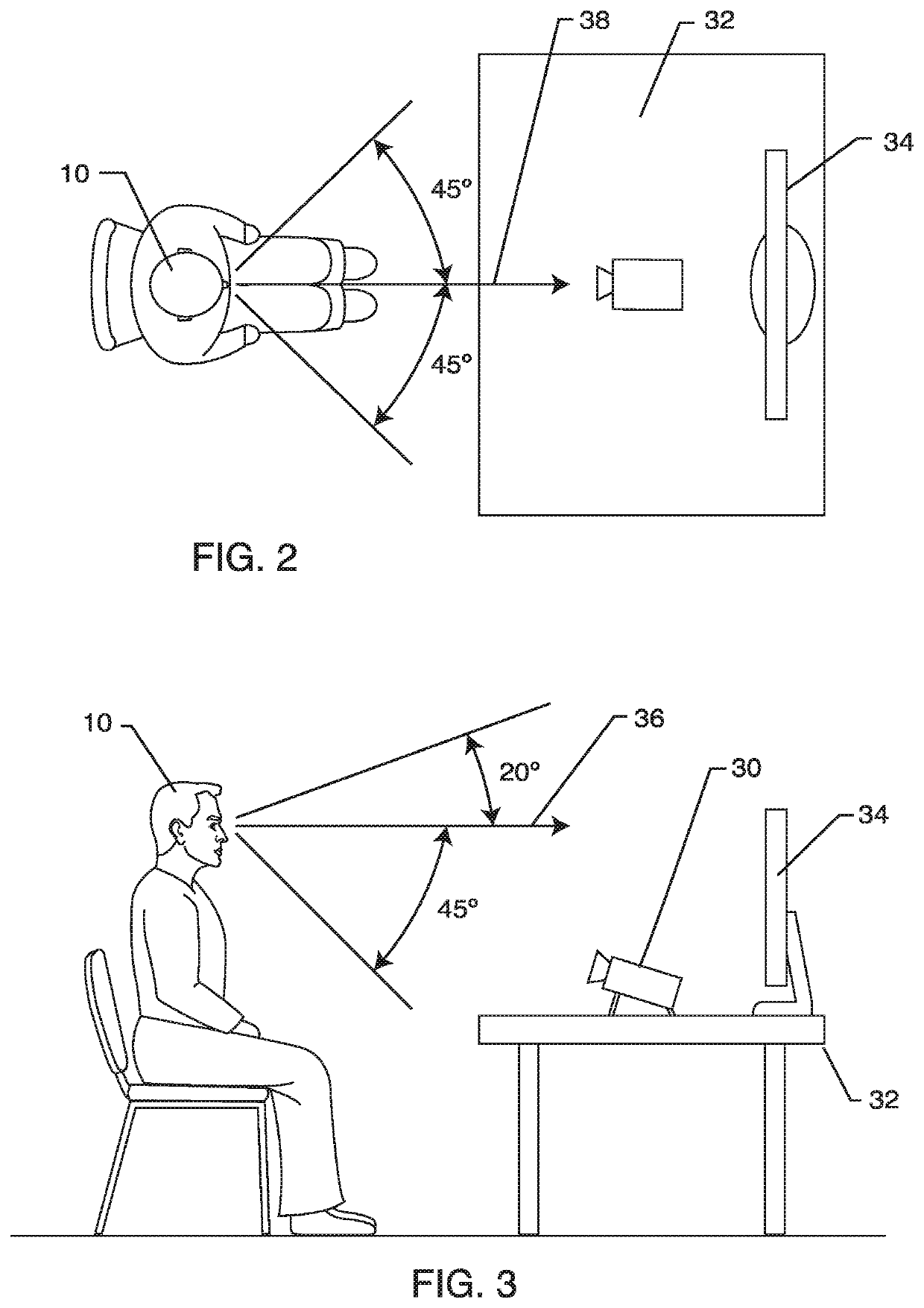Cognitive and emotional intelligence engine via the eye
a cognitive and emotional intelligence engine technology, applied in the field of computation, can solve the problems of limited ability of a computer system to provide accurate inference on human mental states, use state-of-the-art machine learning methods, and difficult mind-reading tasks, so as to promote effective social interactions, improve predictive precision, and promote empathy and social understanding.
- Summary
- Abstract
- Description
- Claims
- Application Information
AI Technical Summary
Benefits of technology
Problems solved by technology
Method used
Image
Examples
Embodiment Construction
[0029]The approach involved recording a time series of eye behaviors while the subject engaged in a game or task that was carefully controlled to induce very specific mental (cognitive or emotional) states at particular moments in time. The measured time series of eye behaviors represented the feature set (dependent variables) to serve as input to the model, while the time course of induced mental events (independent variable) provided a design matrix of experimental events to serve as supervised training so the model was able to learn to isolate diagnostic patterns of information in the feature set. The validity of this approach is confirmed by 3 independent measures: 1) decades of literature introducing empirical evidence for the very high correlation between eye behaviors and mental states; 2) carefully controlled experimental design and hardware calibration; 3) interactive feedback from the human participants to confirm the accuracy of the model inferences.
[0030]The first step w...
PUM
 Login to View More
Login to View More Abstract
Description
Claims
Application Information
 Login to View More
Login to View More - R&D
- Intellectual Property
- Life Sciences
- Materials
- Tech Scout
- Unparalleled Data Quality
- Higher Quality Content
- 60% Fewer Hallucinations
Browse by: Latest US Patents, China's latest patents, Technical Efficacy Thesaurus, Application Domain, Technology Topic, Popular Technical Reports.
© 2025 PatSnap. All rights reserved.Legal|Privacy policy|Modern Slavery Act Transparency Statement|Sitemap|About US| Contact US: help@patsnap.com


